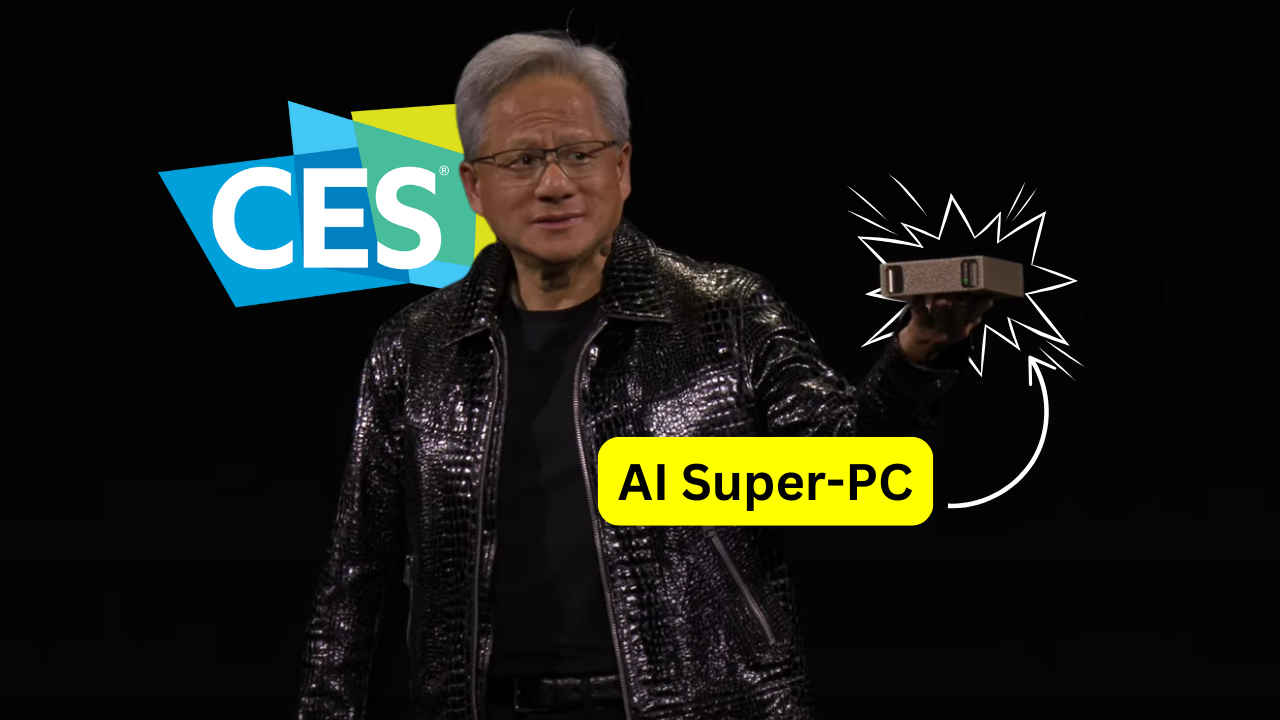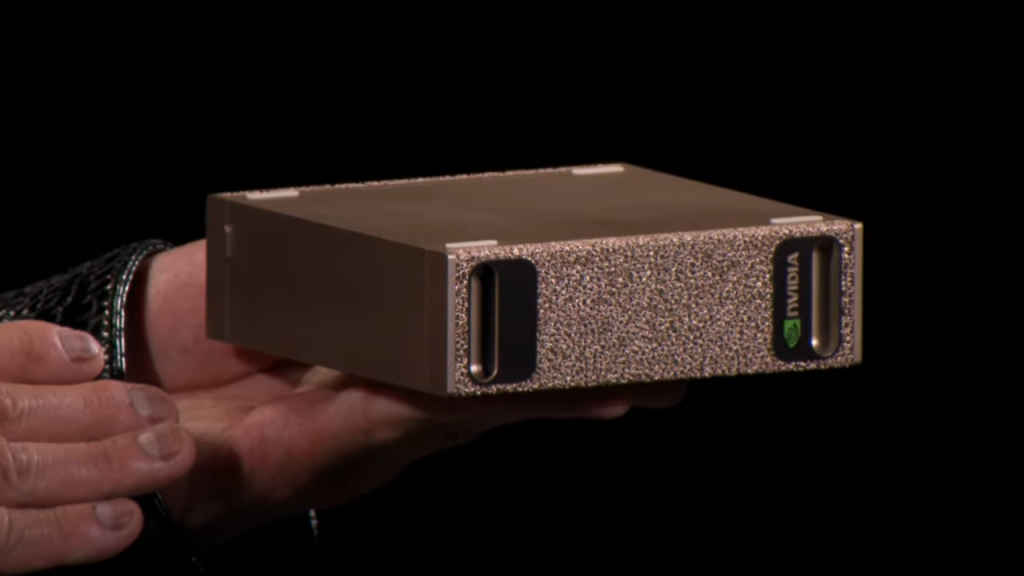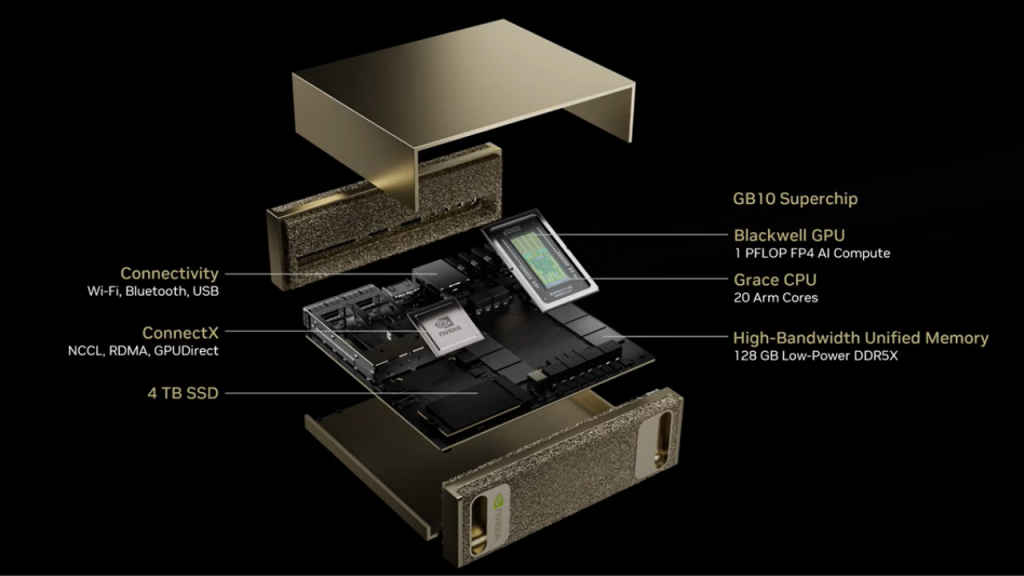CES 2025: Meet NVIDIA Project DIGITS, world’s first AI Super-PC with 5 interesting features

At CES 2025, NVIDIA made headlines with a new device that might just redefine what we call a “personal computer.” They introduced Project DIGITS, a personal AI supercomputer aimed at putting advanced AI capabilities directly into the hands of everyday users – with no need for any cloud subscriptions.
 Survey
SurveyHere are five key features that make this futuristic computer a potential game-changer, along with some thoughts on what such power means for most of us.
1) GB10 Grace Blackwell chip = a petaflop powerhouse
At the heart of Project DIGITS is the GB10 Grace Blackwell Superchip, dishing out up to 1 petaflop of AI performance at FP4 precision. As NVIDIA CEO Jensen Huang mentioned in his CES 2025 keynote address, it’s built on NVIDIA’s new Blackwell GPU architecture paired with a Grace CPU, featuring 20 ARM-based cores – co-designed with MediaTek for top-notch efficiency.
Also read: NVIDIA Blackwell GeForce RTX 50 Series graphics cards announced starting at $549
Imagine you have to edit a 3D environment for a next-level VR game, or process real-time data for advanced climate simulations right from your home office. That’s the kind of horsepower a petaflop offers. No more waiting in a queue for shared server resources, as Project DIGITS can handle enormous tasks like training medium-sized AI models for speech recognition, or even exploring how your neighbourhood’s weather changes hourly with fine-grained forecasting. In short, it’s high-performance AI computing in a tiny handheld box that sits next to your desk. Incredible, right?

2) Run 200-billion parameter LLMs locally
NVIDIA Project DIGITS is built to handle AI workloads that were, until now, the realm of supercomputing clusters. With the ability to run large language models (LLMs) up to 200 billion parameters, it covers plenty of ground for home-based or small-lab AI research. In case you need to run an even bigger LLM, you can network two DIGITS units via NVIDIA ConnectX to tackle models up to 405 billion parameters.
Also read: CES 2025: Wearable gadgets we all want right now
I can’t even begin to tell you what this means for individual developers. Freelance developers wanting to create a specialized and sandboxed virtual assistant for legal documents, having the freedom of 200 billion parameters lets you craft a more context-aware system without paying for expensive cloud services. Connect two Project DIGITS together and could build something that can parse entire libraries for academic research or generate intricate storylines for next-gen video games.
3) Crazy amount of RAM and storage
The NVIDIA Project DIGITS boasts 128GB of unified, coherent memory and up to 4TB of NVMe storage. This unified memory architecture ensures data is handled smoothly and quickly, which is crucial for large-scale AI tasks. What all of this exaggerated memory and onboard storage means is that you won’t have to deal with any performance bottlenecks. Let’s say you’re editing ultra-high-resolution video footage in 8K while also running a simulation to track real-time road traffic data for a smart city project – both can operate in parallel without your system grinding to a halt. Plus, 4TB of super-fast NVMe storage means you can store enormous datasets (like medical imaging files or entire corpuses of text) locally for quick access, no external drive required.

4) Easily fits into NVIDIA’s AI ecosystem
One of the highlights of Project DIGITS is that it runs on a Linux-based NVIDIA DGX OS, linking effortlessly with NVIDIA’s suite of AI software. That includes specialised toolkits from the NVIDIA NGC catalog – like NeMo for customising language models, RAPIDS for data science, and popular frameworks such as PyTorch. It also supports Python and Jupyter notebooks, so you don’t need to learn a bunch of new tools if you’ve already dipped your toes in data science.
Also read: CES 2025: Key Smartphone Innovations To Look Forward To
If you’re a graduate student wanting to do deep research on protein folding or an indie developer prototyping an AI-based music composition app, you can dive right in. The comprehensive software ecosystem means you’re not stuck assembling a jigsaw puzzle of tools and libraries, which can save a lot of time on starting all kinds of new AI projects.
5) Personalised AI supercomputing starts at $3,000
Perhaps the most surprising spec of all is the price – Project DIGITS starts at $3,000. NVIDIA’s aim is to democratise advanced AI, letting individual researchers, data scientists, or even curious tech hobbyists own a personal supercomputer.
Previously, getting your own AI machine with petaflop-level performance wasn’t just a luxury – it was nearly impossible for small labs or solo professionals. A $3,000 starting price tag (while not exactly pocket change) opens the door for a much broader audience.
When a personal AI supercomputer emerges with this kind of performance under the hood, it challenges us to think about the next wave of innovation. Perhaps in a few years, we won’t be talking about “cloud compute” as the be-all and end-all. Instead, we’ll be flipping on something like the NVIDIA Project DIGITS under our desks, letting it crunch away on the next big idea, all in the comfort of our own home.
Also read: CES 2025: Samsung and LG tease future of TV with AI inside
Jayesh Shinde
Executive Editor at Digit. Technology journalist since Jan 2008, with stints at Indiatimes.com and PCWorld.in. Enthusiastic dad, reluctant traveler, weekend gamer, LOTR nerd, pseudo bon vivant. View Full Profile